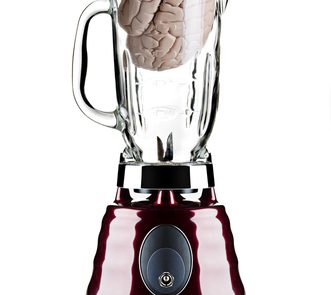It’s no secret that running is great for your emotional health. Science shows that physical activity – especially strenuous exercise like fast running – releases happy hormones, such as serotonin, that can make fitbies feel more relaxed and positive. It’s so effective, in fact, that researchers from the Penn State University in the US report that active people have greater feelings of excitement and enthusiasm than non-active types. And the mental benefits are not short-lived, either – further data in the journal Medicine and Science in Sports and Exercise shows that exercise can buffer brains against long-term emotional stress, so that you’re not only less anxious now but also less likely to feel anxious in the future.
The trouble is that strong emotions – both positive and negative – can also stop us from going for a run. After all, we’ve all felt too frazzled, pumped up or vexed to hit the roads. Apparently, that’s a common scenario – recent data reveals that people who feel either overly happy or down in the dumps are less likely to exercise than those who are in a neutral frame of mind. But it needn’t be this way – the answer to feeling emotional isn’t to ditch your workout but to change it. Strong emotions create a hot bed of hormones that can be used to your advantage. “Being aware of your emotions when training is so important,” says Kim Ingleby, mind-body expert and celebrity confidence coach (newyoubootcamp.com ), ‘You absolutely must calm down if you’re stressed, and the way to this is through focused training like yoga, Pilates or gentle jogging.” The takehome message? Don’t do that supertough session you had planned!
LONGDISTANCE RUN
BEST FOR…
Impartial feelings
So, you feel neither happy nor sad. It’s just another day – right? While a blank mood might make you feel emotionally detached from the rest of the world, it’s actually a great mental state for doing focused workouts. “I think having no strong emotions is the best state for a steady-paced endurance run,” agrees Kim. “Aim to run a long way (for you) at a comfortable pace. Perhaps download some podcasts to listen to, explore a new route or blend some good stretching into the session. You can even throw in a few fartlek intervals (spurts of speed) to mix things up if you’re feeling like it.” Time to hit the tarmac or trails!
LIGHT JOGGING
BEST FOR…
Low moods
When you’re feeling so far down in the dumps that even a picture of Ryan Gosling can’t raise a smile, light aerobic exercise like jogging is your workout saviour. Scientists have long known that cardiovascular exercise encourages the release of endorphin chemicals that boost mood. However, a 2014 study in the journal Cell reports that aerobic exercise, like running, in particular has a detoxification effect that can protect the brain. Data shows that exercise produces an enzyme that purges the blood of substances linked to depression. Your running quota? A Sports Medicine analysis of 30-60 minute cardio workouts shows that a 45-minute session at 50-85 percent of maximum heart rate is great for depression. “Go on a route that you enjoy or to a place that evokes happy thoughts,” suggests Rory Knight, trainer at kiqplan.com. “Being in such a place will instantly transform your mood!”
SPRINT INTERVALS
BEST FOR…
Happy days
When you’ve got that blissed-out feeling, your body is flooded with the happy hormones, endorphins, serotonin and dopamine and oxytocin. While it’s possible to feel ‘too high’ to work out, now is the time to make the most of your emotions. “Negative emotions can decrease performance but balance, stability and happiness will make you work to your optimum,” explains Jacqui. “If you’re happy, you will tend to put 100 percent more into a workout on a physical level, so now is the time to do a really strenuous interval session. You’ll feel even better [and even more chipper, if that’s possible!] afterwards!”
HILL REPEATS
BEST FOR…
Angry souls
Seeing red? When humans get angry, science suggests heart rate increases, cortisol secretion decreases and levels of the happy hormone serotonin drop. For many, this provides the perfect physiological environment for a hard workout, so much so that data in the journal of Sport and Exercise Psychology shows activity helps angry types control their emotions. “Hill intervals are perfect for when you’re angry because people have a love/ hate relationship with them,” says Kim. “Focus all your energy on performing a fast-paced sprint up the hill. With each hill, let go of anger and, with each downhill jog, relax and be in a happy state. By the time you finish, you will feel focused, calm, relaxed and probably shattered, too!” There’s nothing quite like feeling too tired to be angry.





















